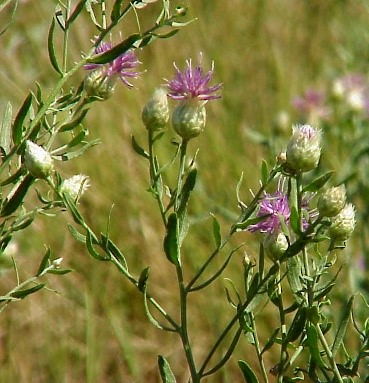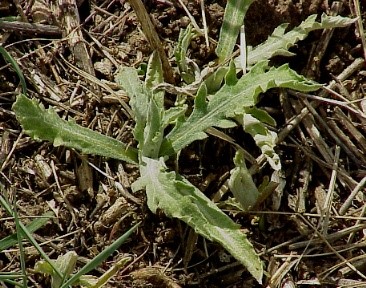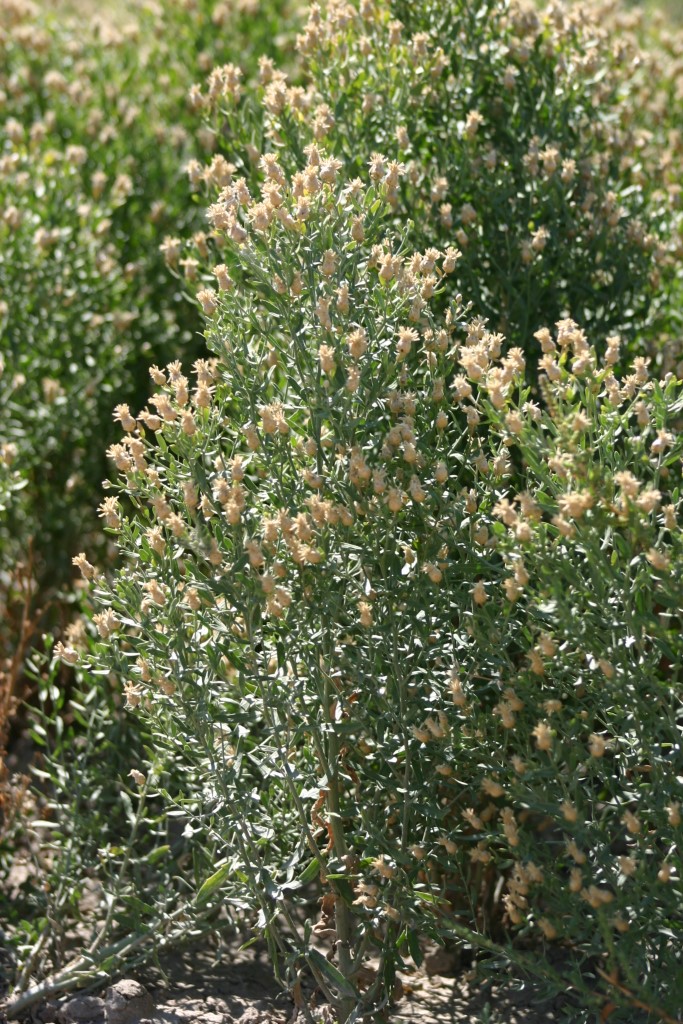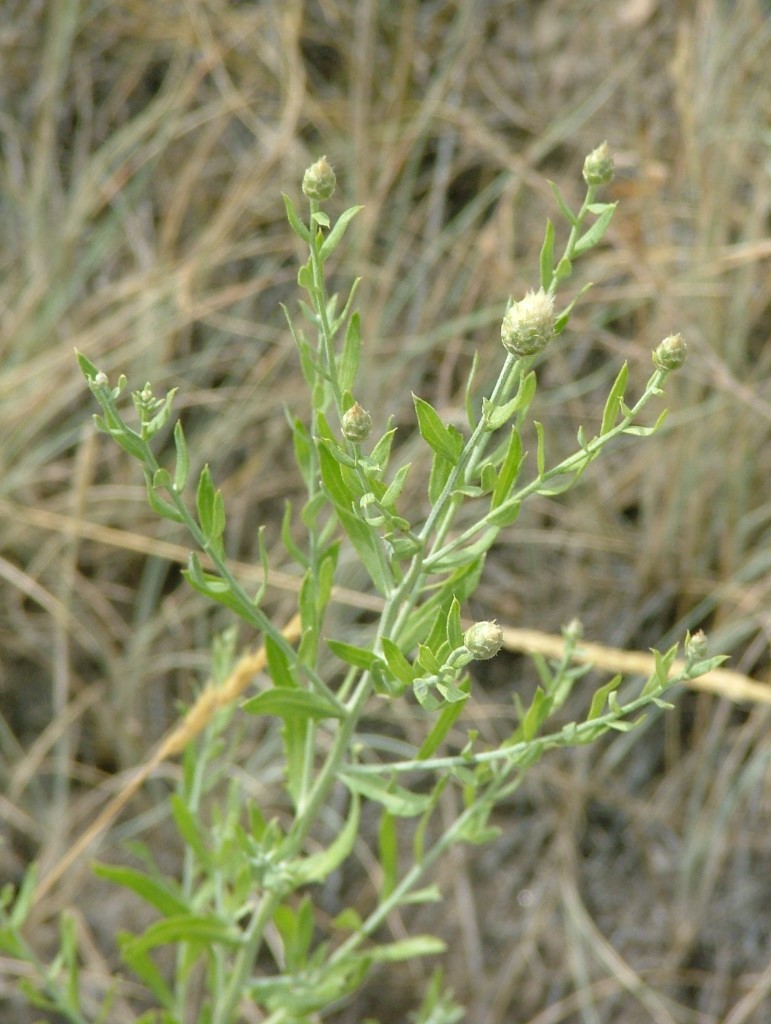
Russian Knapweed

Description
Russian knapweed is an herbaceous perennial forb in the Asteraceae (daisy) family. It produces 1 to 3 feet tall stems from an extensive, rhizomatous root system (roots are dark brown to black in color). Stems are usually heavily branched. Basal leaves are deeply notched or lobed. Stem leaves have slightly toothed margins and arranged alternately on stems. The entire plant is covered in small hairs giving it a grayish appearance. Russian knapweed flowers from early summer to fall. Flowers are small and terminal; they are usually solitary but may occur in small clusters. Flowers are compound and made up of white to purple florets clustered together in a dense head enclosed in bracts. Bracts are smooth and papery. Seeds are small (2.5 mm), oval, white or ivory, and have pappus at one end.
Russian knapweed produces sesquiterpene lactones that make it toxic to horses. It also produces and exudes allelopathic chemicals into the soil that inhibit other plants.
Origin and Spread
Russian knapweed is native to Eurasia and the Mediterranean region and was introduced to North America in the early 1900s as a seed contaminant. It spreads by seeds and rhizomes. Pappus on seeds catch on clothing, fur, and equipment and are transported to new areas. It is primarily found in disturbed sites, rangeland, sagebrush steppe and other dry areas.
.png)
Management Options
Prevention and cultural control strategies should be utilized as much as possible. Utilize weed free forage, gravel, and construction materials as possible to prevent accidental introduction.
There are several biological control agents available for Russian knapweed; however, population densities of Russian knapweed in Teton County are not high enough to sustain biological control agents.
Because Russian knapweed has a rhizomatous root system, it should not be managed by hand pulling or digging out the root. Mowing will not eradicate stands of Russian knapweed, but it can be beneficial in preventing flower production, and repeated mowing throughout the growing season may help deplete nutrient stores in the rhizomes. Do not mow while seeds are present. Deep cultivation may deplete the root system, but this is not usually practical in the rocky soils in Teton County.
Larger infestations can be controlled with herbicides. Spring and fall treatments of rosettes are recommended, but treatment of bolting plants can be effective. Read the label before using any herbicide. Contact TCWP if you have any questions about application rates or how to use an herbicide.
Additional Resources
- Guide to Poisonous Plants: Russian Knapweed. (2025) Colorado State University College of Veterinary Medicine.
- Field Guide for Managing Russian Knapweed in the Southwest. (2017) United States Department of Agriculture Forest Service Southwestern Region. (TP-R3-16-13)
- Russian Knapweed. (2025) Colorado State University Extension
- Russian Knapweed (Rhaponticum repens). Washington State Noxious Weed Control Board



